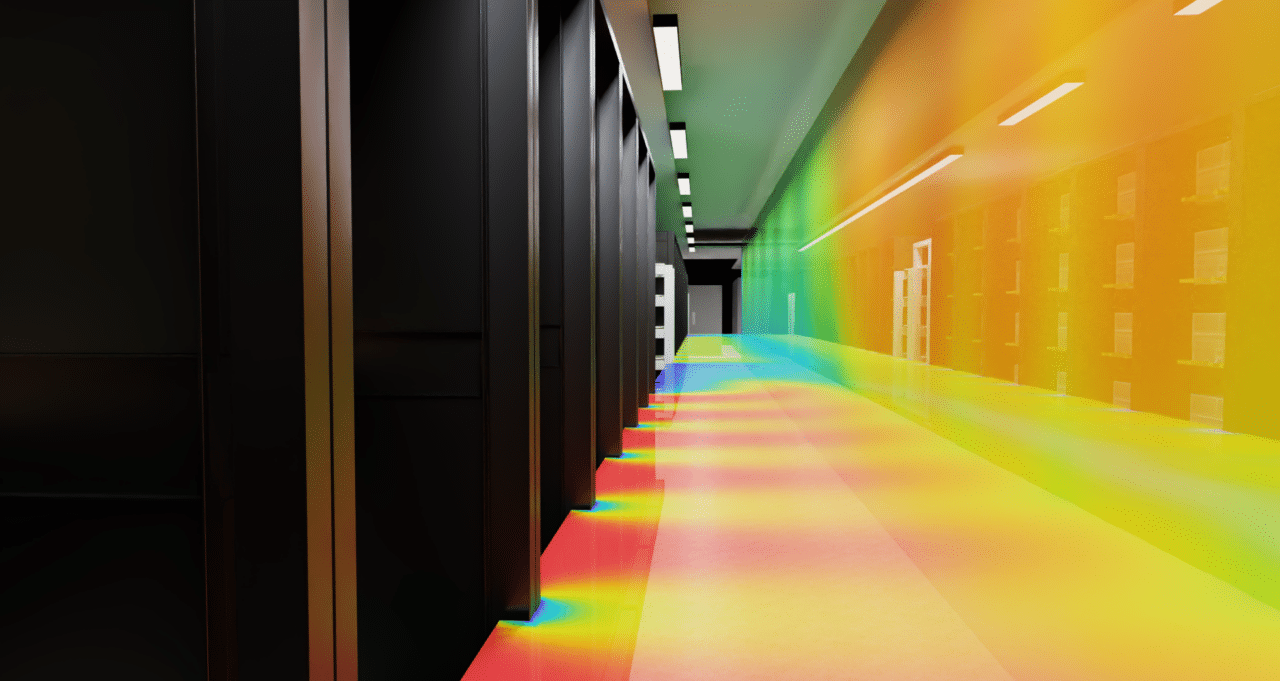A manufacturing plant near Hsinchu, Taiwan’s Silicon Valley, is among facilities worldwide boosting energy efficiency with AI-enabled digital twins.
A virtual model can help streamline operations, maximizing throughput for its physical counterpart, say engineers at Wistron, a global designer and manufacturer of computers and electronics systems.
In the first of several use cases, the company built a digital copy of a room where NVIDIA DGX systems undergo thermal stress tests (pictured above). Early results were impressive.
Making Smart Simulations
Using NVIDIA PhysicsNeMo, a framework for building AI models that understand the laws of physics, Wistron created digital twins that let them accurately predict the airflow and temperature in test facilities that must remain between 27 and 32 degrees C.
A simulation that would’ve taken nearly 15 hours with traditional methods on a CPU took just 3.3 seconds on an NVIDIA GPU running inference with an AI model developed using PhysicsNeMo, a whopping 15,000x speedup.
The results were fed into tools and applications built by Wistron developers with NVIDIA Omniverse, a platform for creating 3D workflows and applications based on OpenUSD.

With their Omniverse-powered software, Wistron created realistic and immersive simulations that operators interact with via VR headsets. And thanks to the AI models they developed using PhysicsNeMo, the airflows in the simulation obey the laws of physics.
“Physics-informed models let us control the test process and the room’s temperature remotely in near real time, saving time and energy,” said John Lu, a manufacturing operations director at Wistron.
Specifically, Wistron combined separate models for predicting air temperature and airflow to eliminate risks of overheating in the test room. It also created a recommendation system to identify the best locations to test computer baseboards.
The digital twin, linked to thousands of networked sensors, enabled Wistron to increase the facility’s overall energy efficiency up to 10%. That amounts to using up to 121,600 kWh less electricity a year, reducing carbon emissions by a whopping 60,192 kilograms.
An Expanding Effort
Currently, the group is expanding its AI model to track more than a hundred variables in a space that holds 50 computer racks. The team is also simulating all the mechanical details of the servers and testers.
“The final model will help us optimize test scheduling as well as the energy efficiency of the facilities’ air conditioning system,” said Derek Lai, a Wistron technical supervisor with expertise in physics-informed neural networks.
Looking ahead, “The tools and applications we’re building with Omniverse help us improve the layout of our DGX factories to provide the best throughput, further improving efficiency,” said Lu.
Efficiently Generating Energy
Half a world away, Siemens Energy is demonstrating the power of digital industrialization using PhysicsNeMo and Omniverse.
The Munich-based company, whose technology generates one-sixth of the world’s electricity, achieved a 10,000x speedup simulating a heat-recovery steam generator using a physics-informed AI model (see video below).
Using a digital twin to detect corrosion early on, these massive systems can reduce downtime by 70%, potentially saving the industry $1.7 billion annually compared to a standard simulation that took half a month.
“The reduced computational time enables us to develop energy-efficient digital twins for a sustainable, reliable and affordable energy ecosystem,” said Georg Rollmann, head of advanced analytics and AI at Siemens Energy.
Digital Twins Drive Science and Industry
Automotive companies are applying the technology to the design of new cars and manufacturing plants. Scientists are using it in fields as diverse as astrophysics, genomics and weather forecasting. It’s even being used to create a digital twin of Earth to understand and mitigate the impacts of climate change.
Every year, physics simulations, typically run on supercomputer-class systems, consume an estimated 200 billion CPU core hours and 4 terawatt hours of energy. Physics-informed AI is accelerating these complex workflows 200x on average, saving time, cost and energy.
For more insights, listen to a talk from GTC describing Wistron’s work and a panel about industries using generative AI.
Learn more about the impact accelerated computing is having on sustainability.
